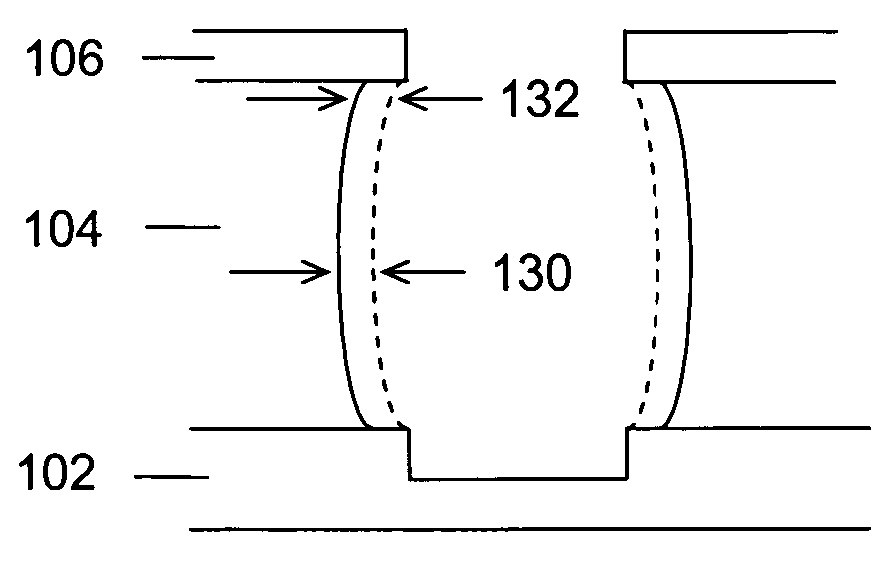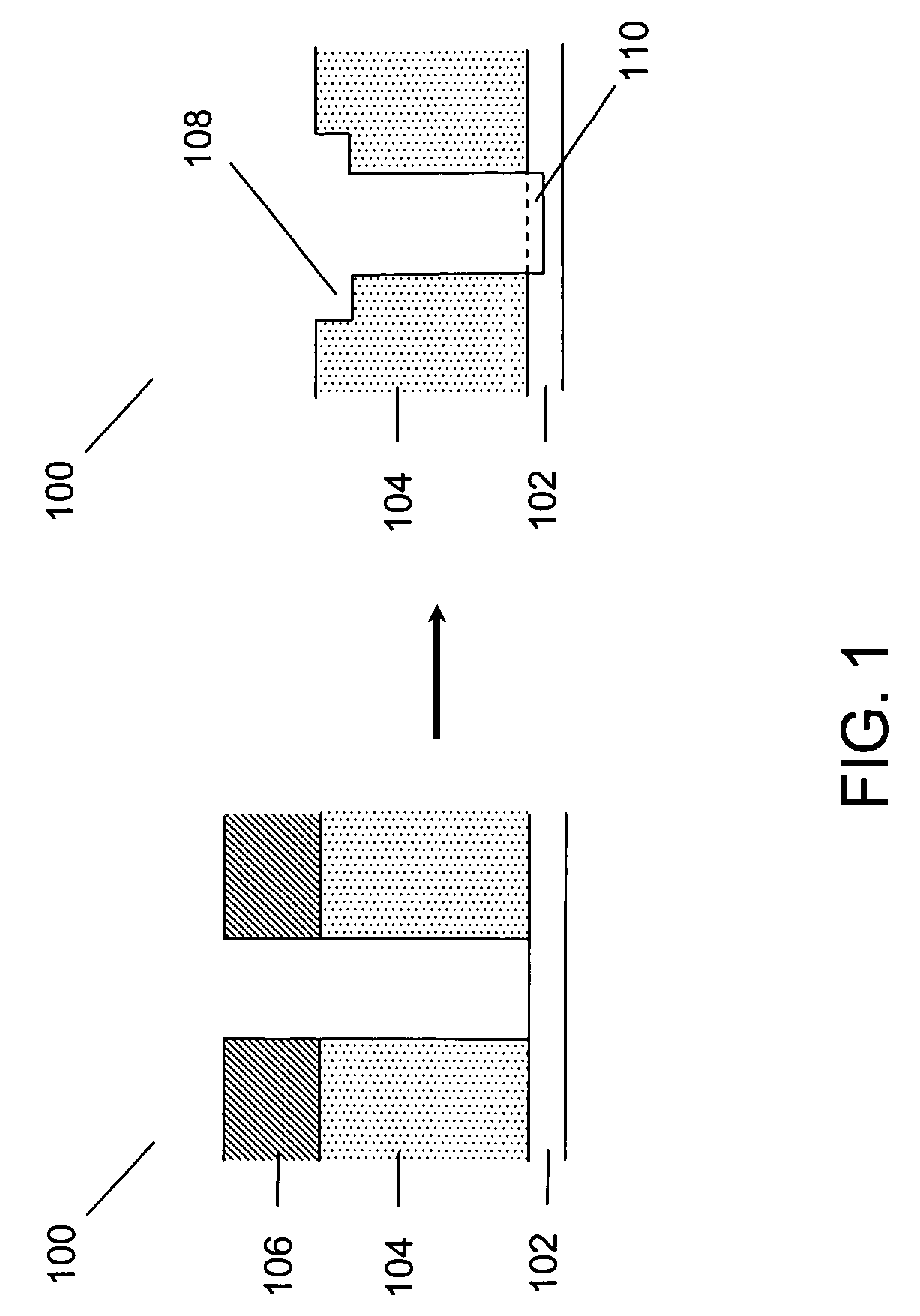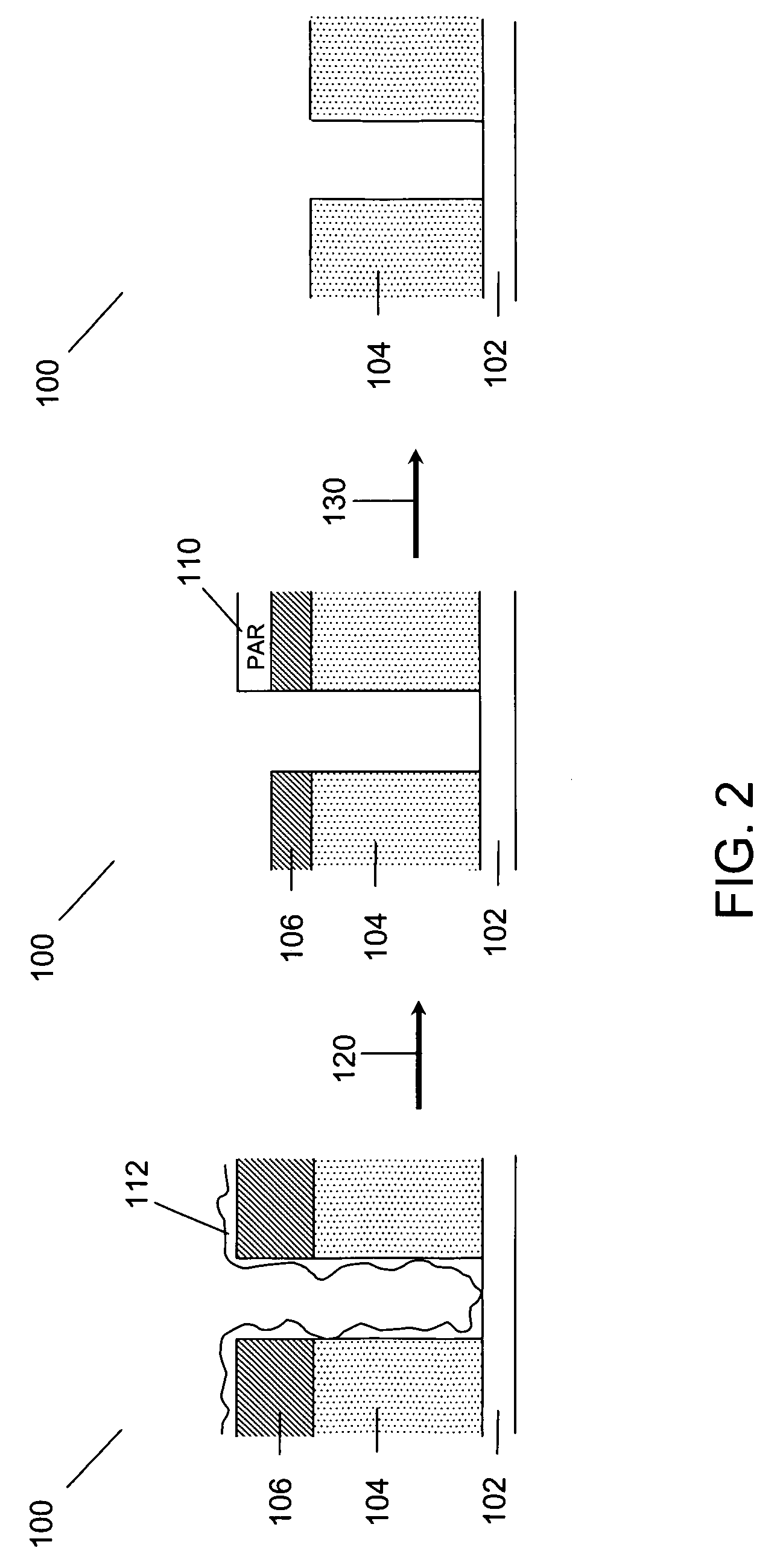Low-pressure removal of photoresist and etch residue
a technology of etch residues and photoresist, which is applied in the field ofplasma processing, can solve the problems of consuming the cap layer, reducing the efficiency of the process, so as to reduce the erosion of the remaining substrate layer
- Summary
- Abstract
- Description
- Claims
- Application Information
AI Technical Summary
Benefits of technology
Problems solved by technology
Method used
Image
Examples
Embodiment Construction
[0022]The inventors of related U.S. patent application Ser. No. 10 / 259,381, entitled METHOD FOR REMOVING PHOTORESIST AND ETCH RESIDUE, which are the inventors of the present application, realized that a two-step plasma ashing process can be utilized to remove photoresist remnants and etch residues from a substrate. During the first ashing step, where zero or low bias is applied to a substrate holder upon which a substrate resides, a significant amount of photoresist remnants and etch residues, from preceding etch processes that can, for example, utilize CxFy etch gases, are etched and removed from the processing chamber with minimal erosion of the remaining substrate layers. During the second ashing step, an increased bias is applied to the substrate holder and the ashing process is continued until the photoresist and / or hard mask remnants, and post-ash residues are removed.
[0023]The current inventors have realized that the above-mentioned two-step plasma ashing process can be impro...
PUM
 Login to View More
Login to View More Abstract
Description
Claims
Application Information
 Login to View More
Login to View More - R&D
- Intellectual Property
- Life Sciences
- Materials
- Tech Scout
- Unparalleled Data Quality
- Higher Quality Content
- 60% Fewer Hallucinations
Browse by: Latest US Patents, China's latest patents, Technical Efficacy Thesaurus, Application Domain, Technology Topic, Popular Technical Reports.
© 2025 PatSnap. All rights reserved.Legal|Privacy policy|Modern Slavery Act Transparency Statement|Sitemap|About US| Contact US: help@patsnap.com



